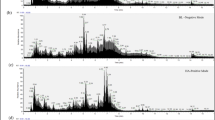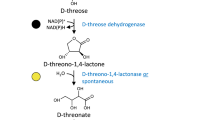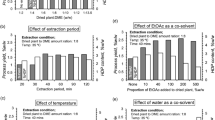Abstract
BUTLER1 has shown that the metabolism of 5 : 5-diphenylhydantoin in man leads to the excretion of what is presumed to be the pure lævorotatory form of 5-(p-hydroxyphenyl)-5-phenylhydantoin, melting point 326–328° (decomp.), [α]28 D − 16° (c. 0.4 in ethanol), through hydroxylation in one ring only. In dogs, however, hydroxylation of either of the two phenyl groups appears to proceed with almost equal facility: the excreted p-hydroxy derivative is slightly dextrorotatory.
This is a preview of subscription content, access via your institution
Access options
Subscribe to this journal
Receive 51 print issues and online access
$199.00 per year
only $3.90 per issue
Buy this article
- Purchase on SpringerLink
- Instant access to full article PDF
Prices may be subject to local taxes which are calculated during checkout
Similar content being viewed by others
References
Butler, T. C., J. Pharmacol., 119, 1 (1957).
Gorvin, J. H., Nature, 161, 208 (1948).
Author information
Authors and Affiliations
Rights and permissions
About this article
Cite this article
GORVIN, J., BROWNLEE, G. Metabolism of 5 : 5-Diphenylhydantoin in the Rabbit. Nature 179, 1248 (1957). https://doi.org/10.1038/1791248a0
Issue date:
DOI: https://doi.org/10.1038/1791248a0
This article is cited by
-
Comparative studies on the distribution and metabolic fate of diphenylhydantoin and 3-ethoxycarbonyldiphenylhydantoin (P-6127) after chronic administrations to dogs and cats
Naunyn-Schmiedebergs Archiv f�r Pharmakologie und Experimentelle Pathologie (1966)



